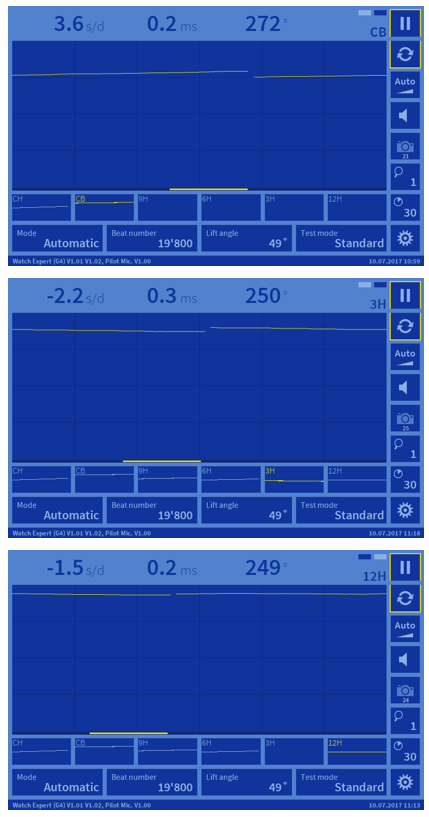The Omega spec on these is pretty loose (40 seconds over three positions, as I remember at full wind) as they are old calibres and parts are not easy to come by. The equivalent value for a 565 is 25 seconds and for a chronometer rated 561, the value would be 12 seconds. Never the less, you'd expect a performance measured in seconds per day rather than minutes for a chronometer bumper... depends on the state of your movement whether it's +/- 5 seconds or +/- 15 seconds (just examples, not where I'd set a watch).
Regards, Chris
Just an FYI - for vintage movements Omega does not specify any of them as chronometers in their timing specs, even if they were chronometers when new. Only "modern" movements are considered to have chronometer level requirements on them according to Omega, so there is no spec for the 561 for example that requires a Delta at 12 over 5 positions at full wind.
All are specified to be measured over only 3 positions instead of 5, and none have a Delta spec at full wind as low as 12. Delta specs at full wind range from a very few at 20, to most being much more than that, with many at 40 and some even at 50 over 3 positions.
Acceptable tolerances for average rate can also get pretty large. All start at -1 on the low side, with the high side often at +16 per day, a bunch are at +21, and many others as high as +31 s/d.
Generally speaking, the performance of a vintage watch will depend on how accurate it was originally, and the condition it is in now. Of course for me the Omega specs are merely a starting point, and I always do my best to exceed them, but there are limits of what can be done within a given budget. Although it's easy to blame the watchmaker for a watch that doesn't run well, I have personally been in situations where owners didn't want to spend the money required to bring the watch back to where it should be, so it depends on the situation. If for example we are looking at a watch with little collector or sentimental value, and it needs a new balance complete many people will simply not spend the money, and that is understandable. Some balances can run as much as $1500 from Omega, so not many people are going to spend that on a watch that's only worth a few hundred dollars.
It's all about communication between the customer and watchmaker - managing expectations with regards to costs and end performance is not always an easy task. I would encourage customers to be up front with their watchmakers about what their expectations are for timing.
For the OP's situation, without knowing what movement is being referred to here, and what the scope of work was that was done, and also how active you are, it's difficult to draw any solid conclusions. It certainly sounds like the job was not done properly. I would encourage you to seek out a watchmaker in the future, rather than going through an AD - that way you can communicate directly with the person working on your watch, and not have everything filtered both ways through a third party.
Cheers, Al


